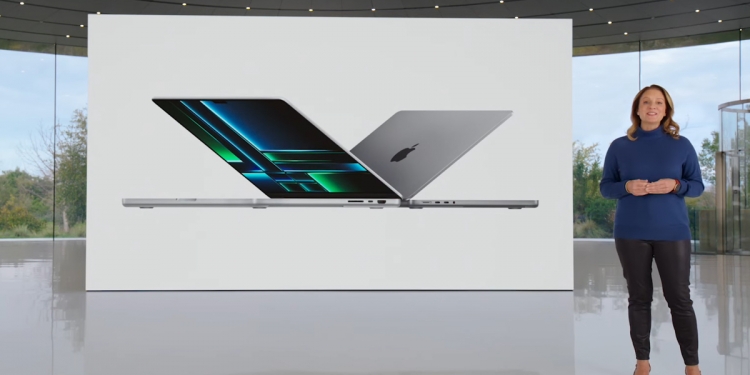Apple has surprised us today with a couple of new products, namely the new MacBook Pro 14 and MacBook Pro 16. It’s taken Cupertino a while, but it’s finally here, along with the new Apple M2 Pro and M2 Max processors too.
Apple M2 Pro and M2 Max
Let’s first start with the new processors from Apple. Just like how the M1 Pro, M1 Max and M1 Ultra were all bigger and more powerful variations of the original M1 chip, the M2 Pro and M2 Max bring along new improvements on top of Apple’s M2 chip.
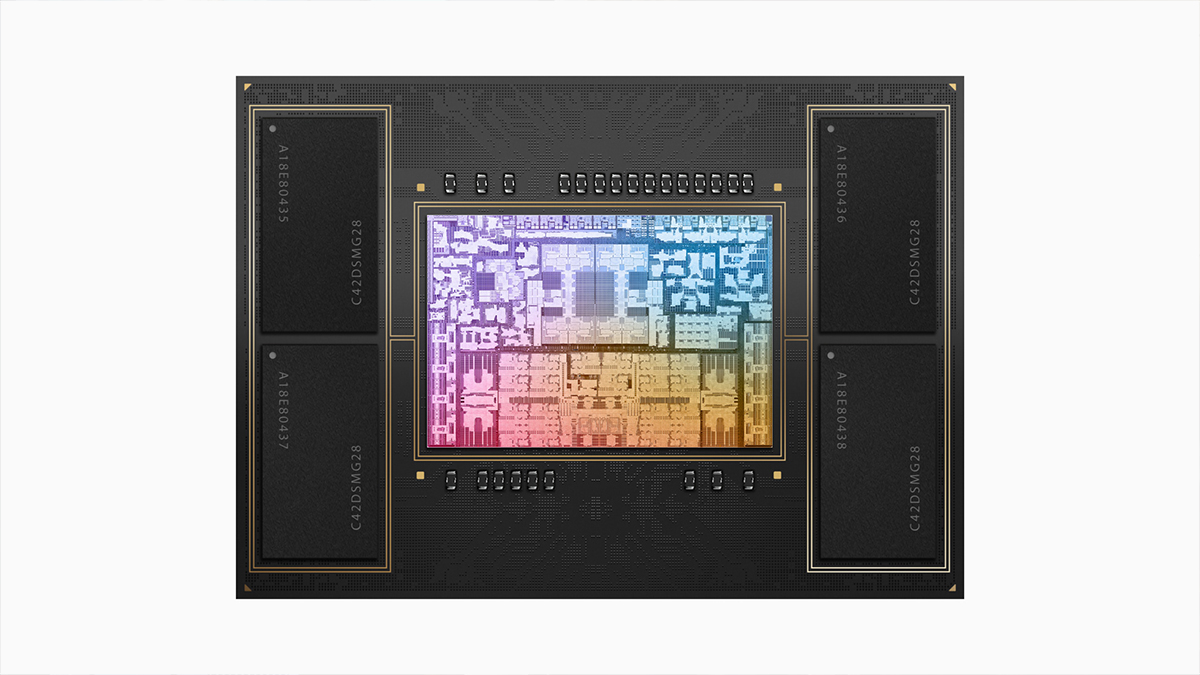
The Apple M2 Pro is built on a second generation 5nm process, featuring up to 40 billion transistors—double of what’s in the normal M2 chip and nearly 20% more than the M1 Pro. According to Apple, it’ll be available in either 10-core or 12-core setups, with up to 8 high performance cores running an ‘ultrawide execution microarchitecture’ with 192KB of instruction cache, 128KB of data cache and 32MB of L2 cache. This is alongside 4 high efficiency cores using a ‘wide execution microarchitecture’, with 128KB of instruction cache, 64KB of data cache and 4MB of L2 cache.
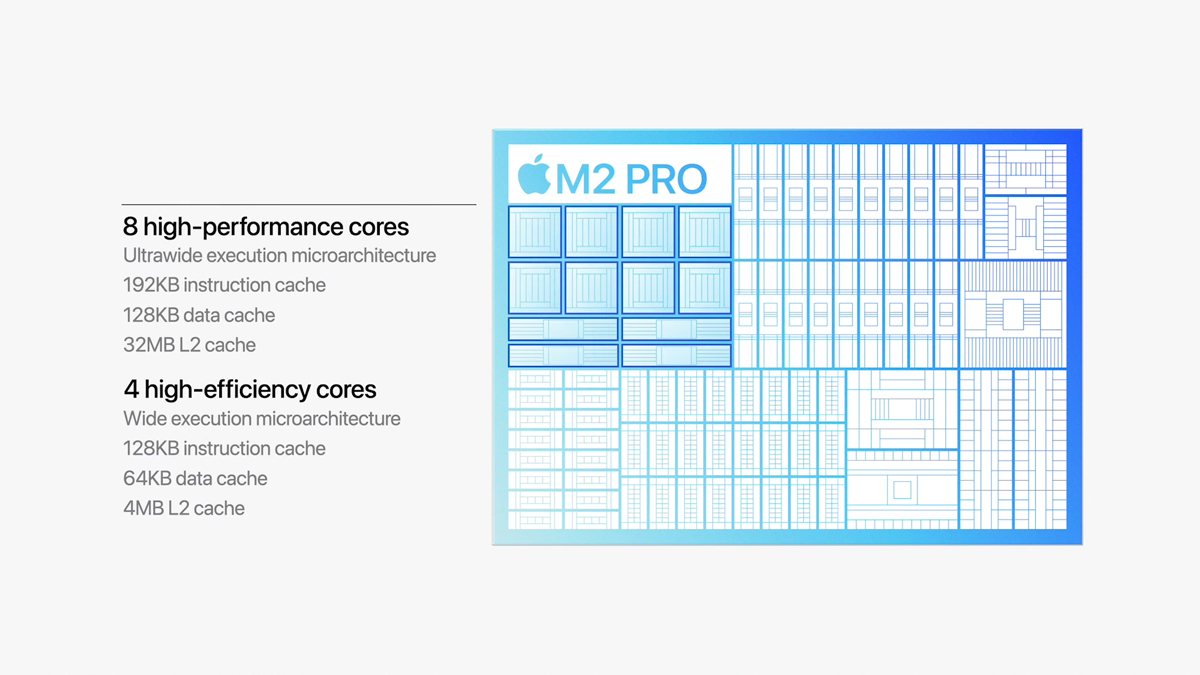
M2 Pro also features 200GB/s of unified memory bandwidth—twice of what the M2 has—and up to 32GB of unified memory. As for graphics, the GPU in the M2 Pro can be configured with up to 19 cores, which is three more than what Apple managed to cram on the M1 Pro. All of this allows the M2 Pro to have performance that’s—according to Apple anyway—20% faster than the M1 Pro, while the GPU is up to 30% faster than the M1 Pro. It also allows programs like Adobe Photoshop to process images up to 80% faster than the last MacBook Pro with an Intel Core i9.
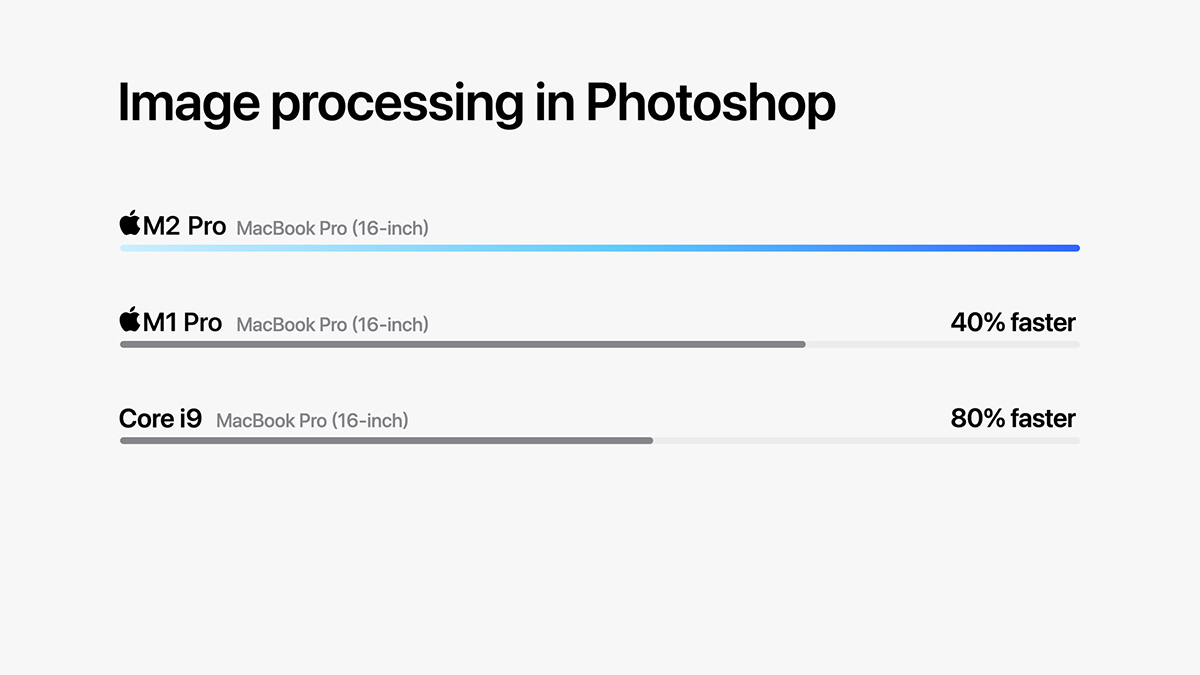
The M2 Max meanwhile kicks things up a notch, featuring 67 billion transistors and 400GB/s of unified memory bandwidth—twice that of the M2 Pro, four times that of the M2 and with support for up to 96GB of unified memory. Apple says that it’s so fast, ‘massive files’ will open instantaneously, with improved multitasking when working across multiple ‘pro apps’ too.
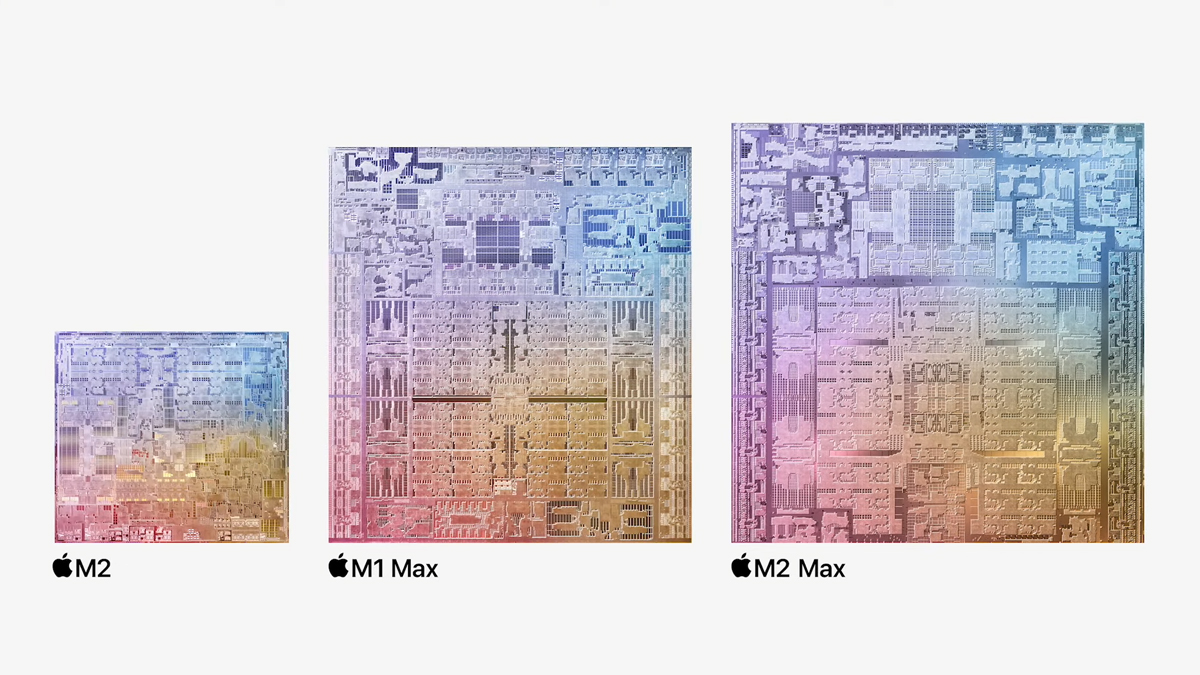
It is built on the same 12-core CPU setup as the M2 Pro, but it’s in the GPU side of things where the M2 Max goes wild. The M2 Max GPU packs up to 38 cores and a larger L2 cache, allowing for it to be 30% faster than the M1 Max. Apple says that if paired with the whopping 96GB of memory, the M2 Max will be able to run ‘graphics-intensive projects’ than competing systems will struggle with. They curiously don’t include much else in terms of benchmarks in the press release other than calling the most efficient and powerful chip for a ‘pro laptop’, so you may want to take their word with a pinch of salt.
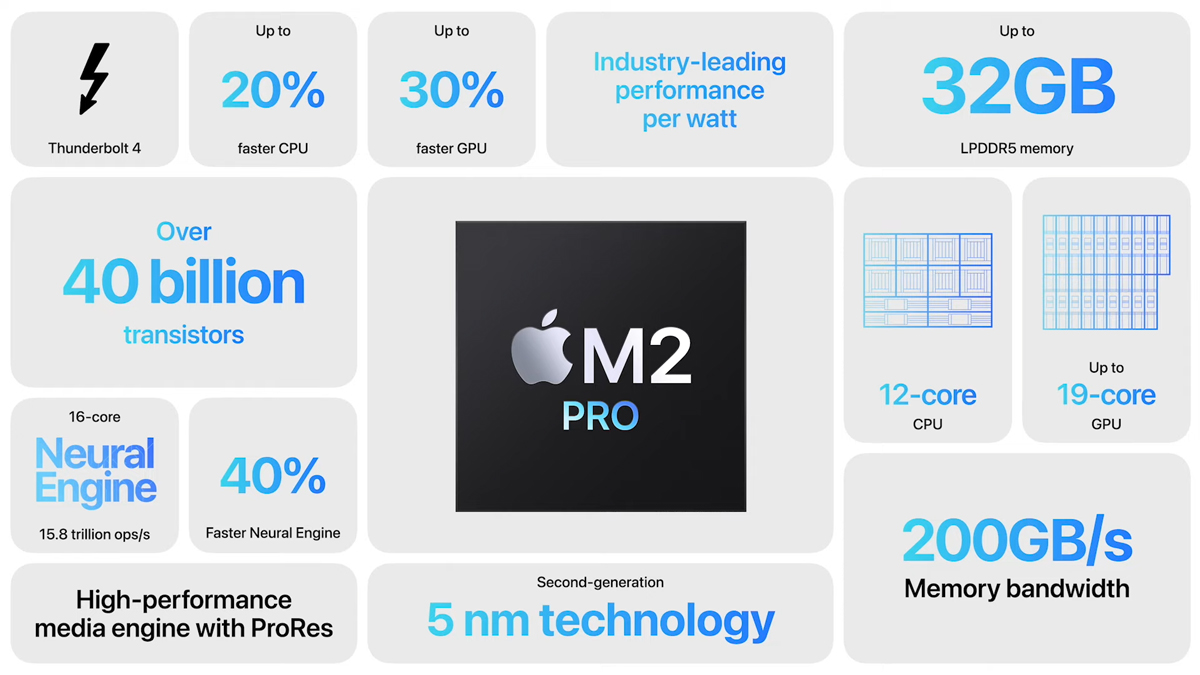

On top of all that, both the M2 Pro and the M2 Max come with Apple’s next generation 16-core Neural Engine that they claim is 40% faster than its predecessor and is capable of 15.8 trillion operations per second. The M2 Pro also comes with a media engine that allows for hardware-accelerated H.264, HEVC and ProRes video encode and decode with playback of multiple 4K and 8K streams at ‘little power’; the M2 Max meanwhile has two of these video encode engines, making it twice as fast as the M2 Pro at video encoding. There’s a new image signal processor too that uses ‘computational video’ for better camera quality as well as an updated Secure Enclave for better security.
Apple MacBook Pro 14 and MacBook Pro 16
Apple won’t just be making processors for fun without any devices to put them in right? Say hello to the new MacBook Pro 14 and the new MacBook Pro 16 too, powered by M2 Pro and M2 Max.
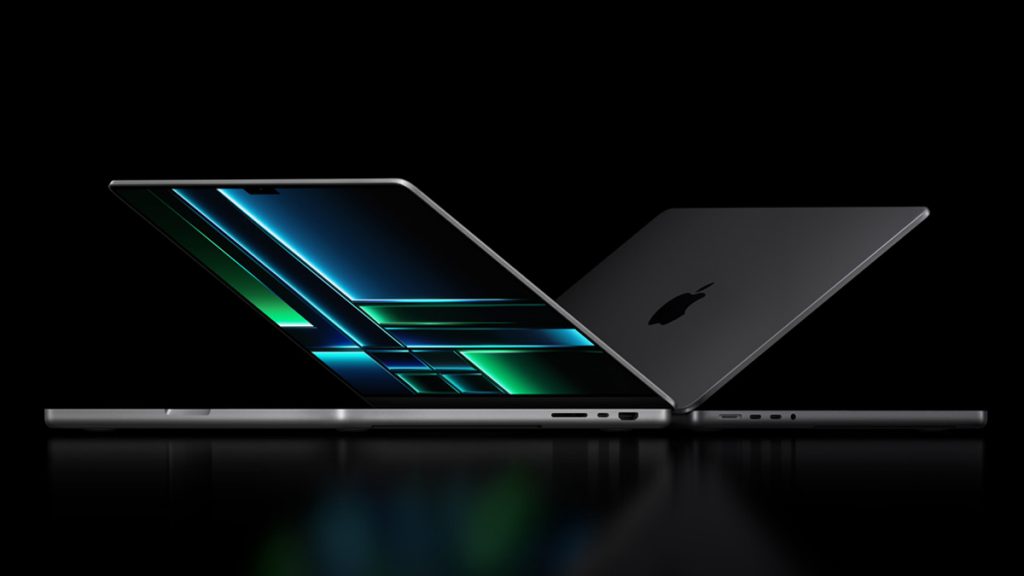
Starting with the MacBook Pro 14, it features the same 14.2-inch, mini-LED Liquid Retina XDR notched display pushing a 3024 x 1964p resolution as that on the 2021 MacBook Pro 14. This means you’re also getting the same 1,000nits of sustained full screen XDR brightness, 1,600nits of peak HDR brightness and 500nits max of SDR brightness, as well as TrueTone, full coverage of the DCI-P3 colour gamut as well as ProMotion for an adaptive 120Hz refresh rate.
Similarly, the MacBook Pro 16 also keeps the same notched display as that on the 2021 MacBook Pro 16, meaning a 16.2-inch, mini-LED Liquid Retina XDR display with a 3456 x 2234p resolution with the same key specs as the MacBook Pro 14.

Then there’s of course also your choice of the either the M2 Pro or the M2 Max under the hood. The base model MacBook Pro 14 will come with the 10-core M2 Pro, while the base model MacBook Pro 16 will have the 12-core M2 Pro instead. It’s also worth noting that if you opt for the M2 Pro, you can only choose either 16GB of 32GB of memory, while if you go for the M2 Max with a 30-core GPU, you can choose between 32GB or 64GB of memory. If you want to go with the big boy M2 Max with a 38-core GPU, you can then choose to have an insane 96GB of memory on your MacBook Pro. For storage meanwhile, you will again have the option of picking from a 512GB SSD all the way to 8TB of storage.
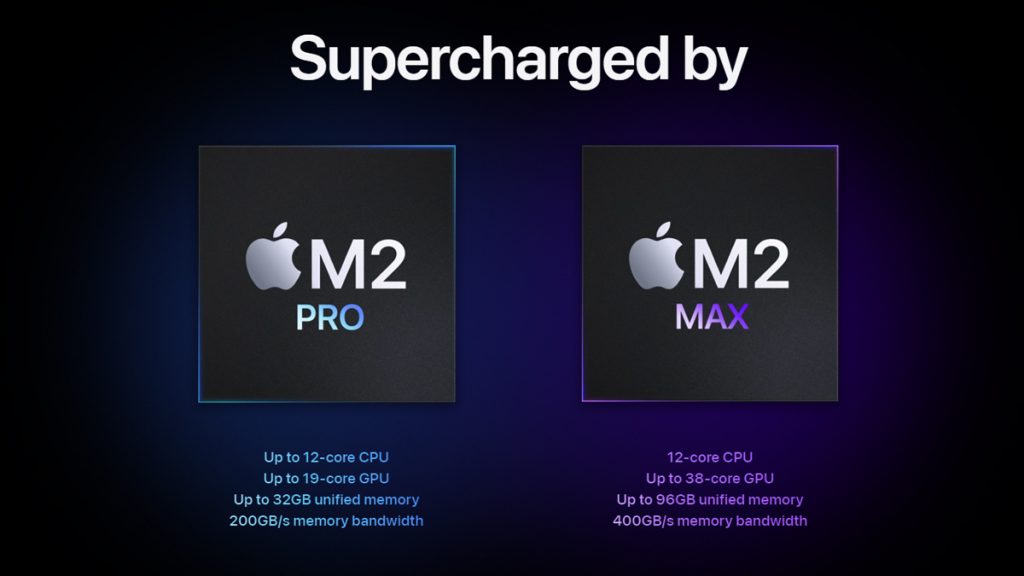
Other notable improvements meanwhile see better connectivity options now, with both the MacBook Pro 14 and the MacBook Pro 16 coming with WiFi 6E and Bluetooth 5.3 wireless connectivity, compared to their predecessors which had WiFi 6 and Bluetooth 5.0 instead. Battery life meanwhile also sees a minor bump, with up to 12 hours of wireless web browsing and up to 18 hours of Apple TV movie playback with the MacBook Pro 14, up an hour from the last generation laptop. The MacBook Pro 16 meanwhile sees up to 15 hours of wireless web browsing and up to 22 hours of Apple TV movie playback, again up an hour from the last generation MacBook Pro 16. This is despite both laptops coming with the same 70Wh and 100Wh battery capacity respectively.
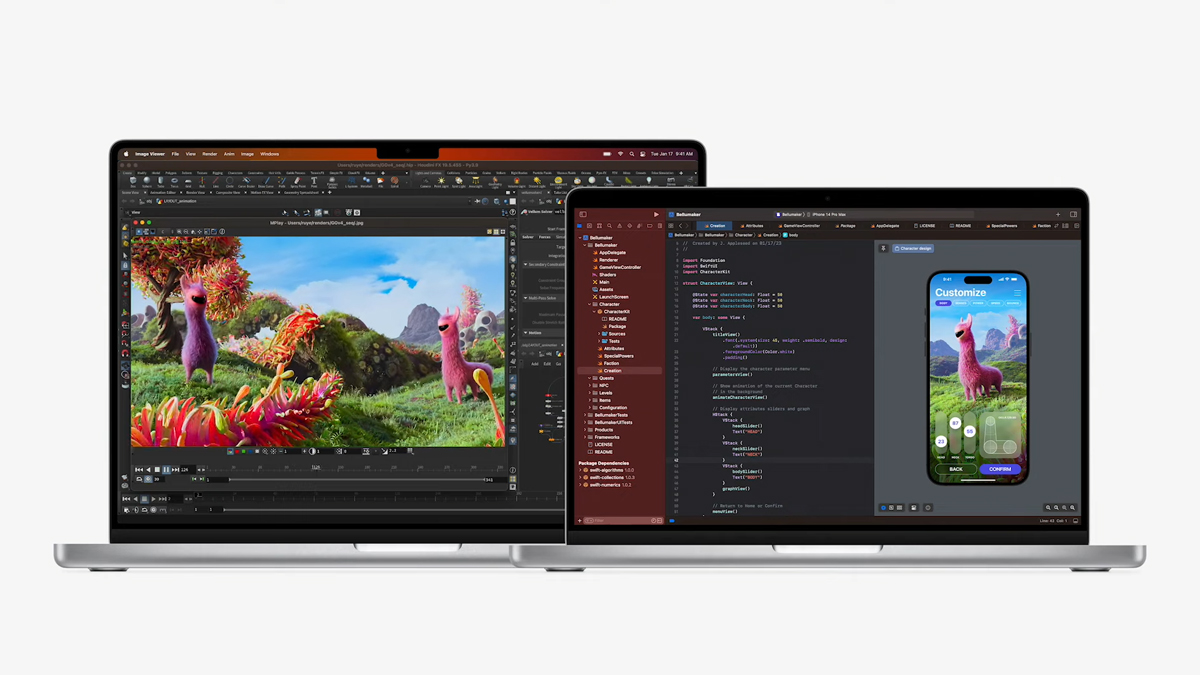
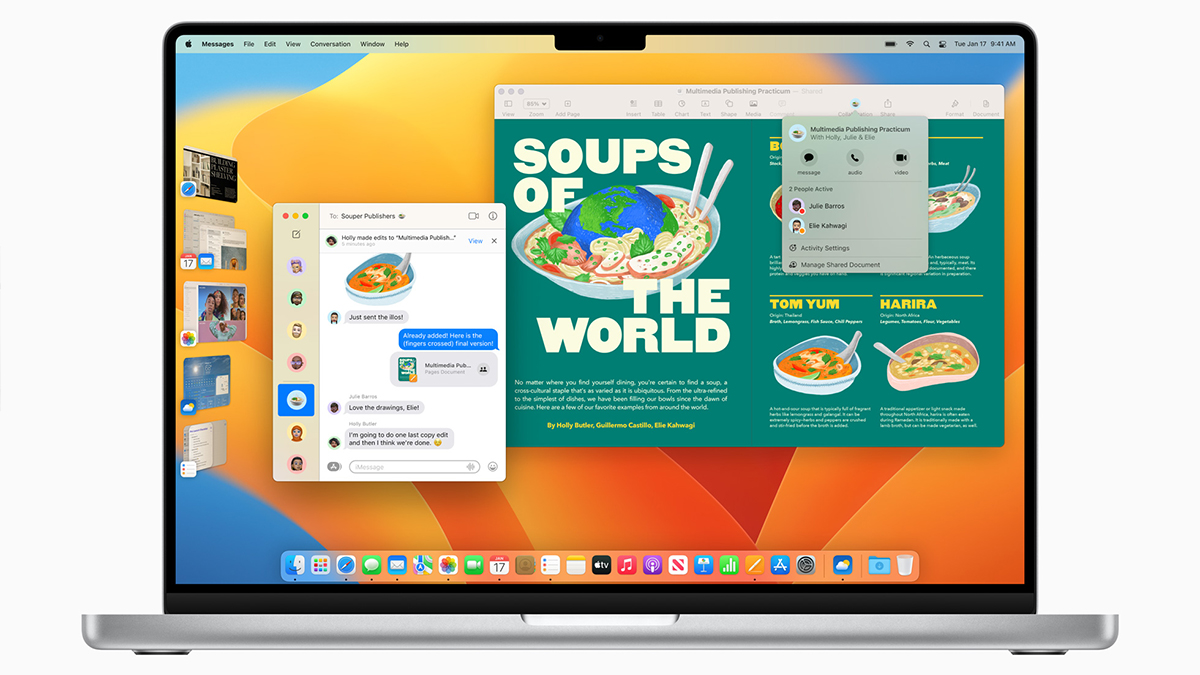
In fact, that’s mostly it when it comes to generational improvements over 2021’s MacBook Pro 14 and MacBook Pro 16. The design is still exactly the same, with the exact same dimensions as their predecessor. They still keep the same 1080p FaceTime HD camera housed in the notch, the same three-mic array and six-speaker stereo speaker setup, and the backlit Magic Keyboard with Touch ID returns too. The I/O is the same as last generation as well, with three USB-C Thunderbolt 4 ports, a HDMI port, an SD card slot, MagSafe charging and a 3.5mm audio jack. You also get up to 96W fast charging on the MacBook Pro 14, while the MacBook Pro 16 can take up to 140W of fast charging.

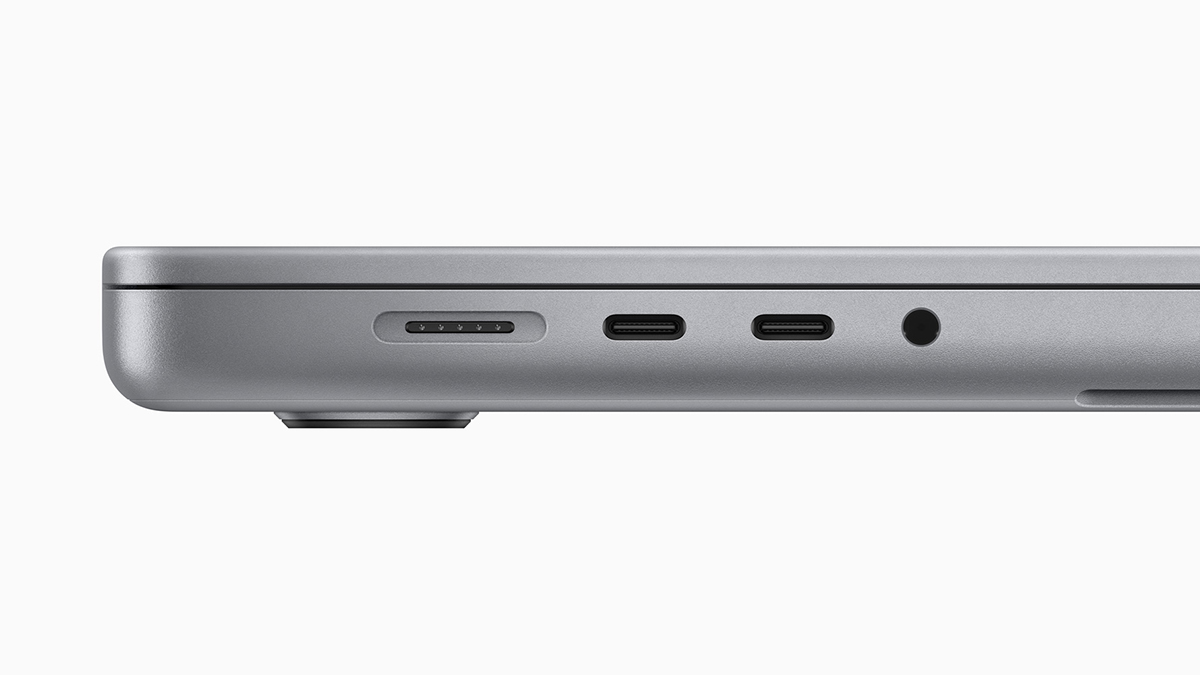
Overall, it’s looking mostly like a refresh of the already successful MacBook Pro 14 and MacBook Pro 16 from two years ago. There’s no major design shift like we saw with the M2 MacBook Air, or even with the last generation MacBook Pro 14 and MacBook Pro 16 that introduced the notch to their laptops. Yes, there are new processors under the hood with improved performance, but other than that, Apple seems to be playing it safe with their new pro-grade laptops here.

As for pricing and availability, both the MacBook Pro 14 and the MacBook Pro 16 are not yet available on the Apple Malaysia website, with Apple instead only telling us to check back later for availability. However, we do already know the pricing details for the new MacBook Pro 14 and MacBook Pro 16. The smaller of the two will start at RM8,799, while the MacBook Pro 16 will start at RM10,799 instead. This means that both laptops will start at the same price as their M1 Pro and M1 Max-powered counterparts from 2021.

